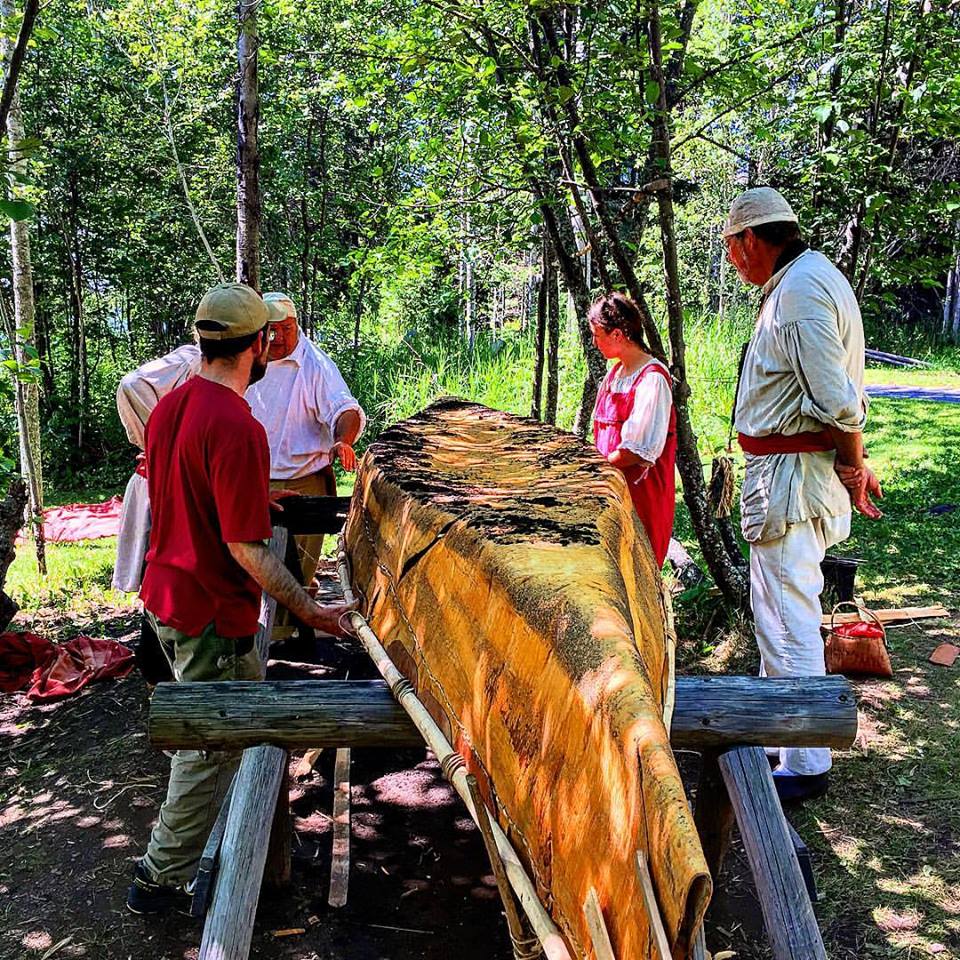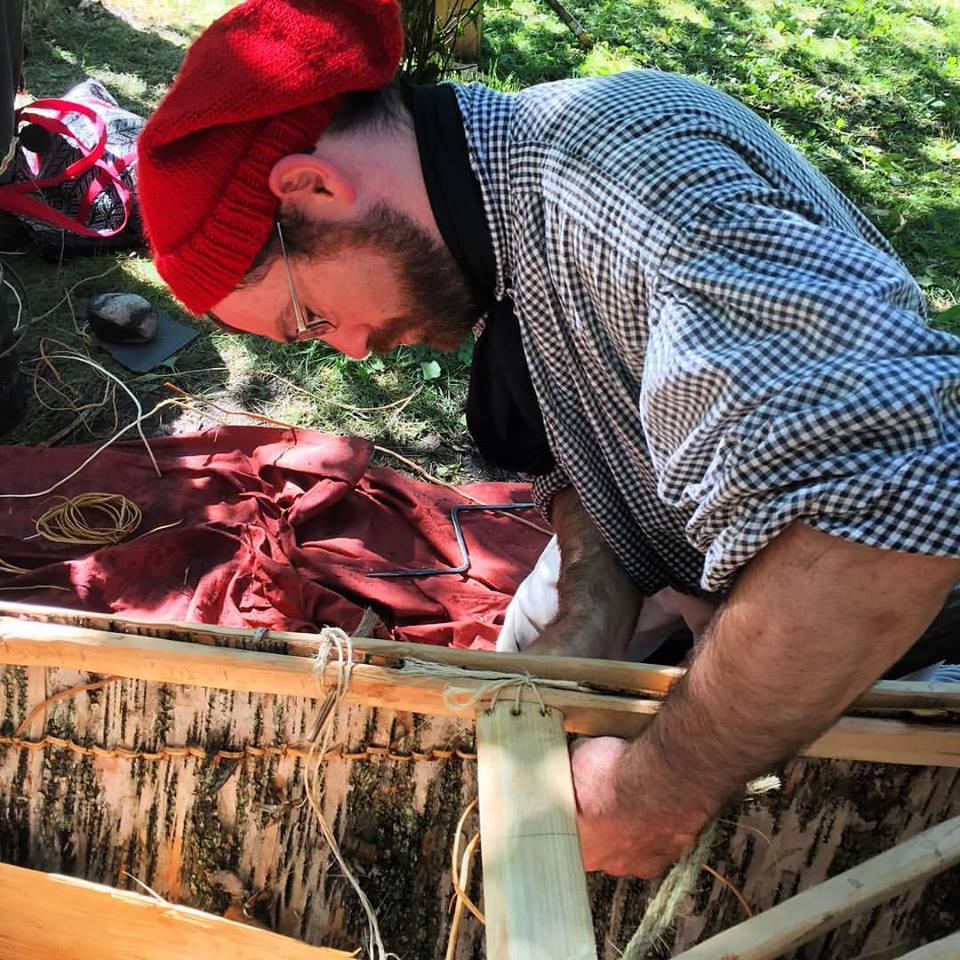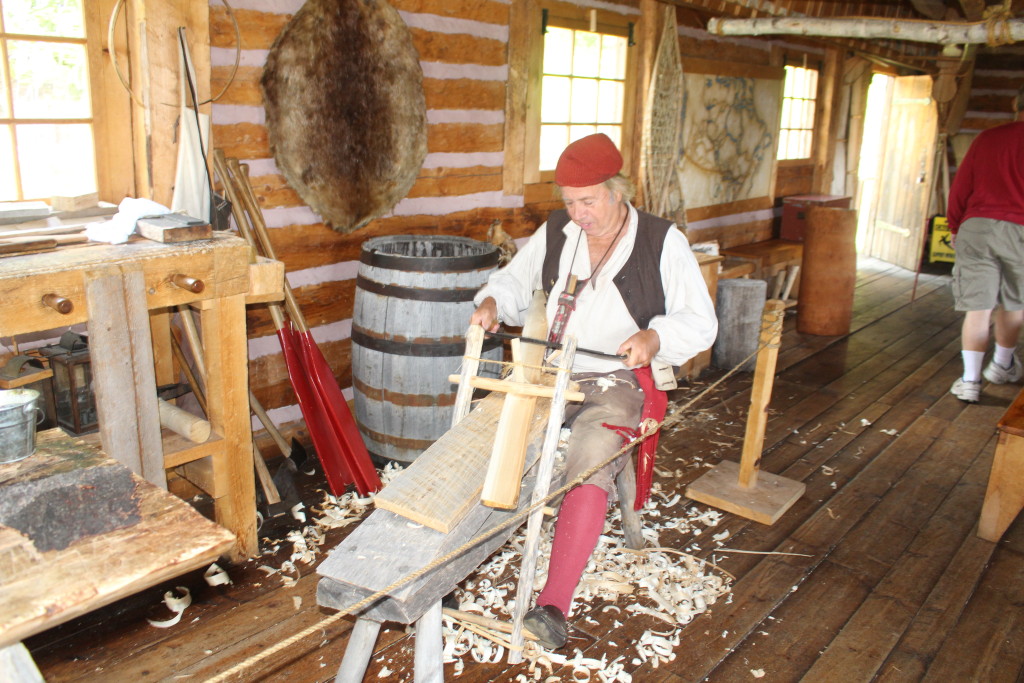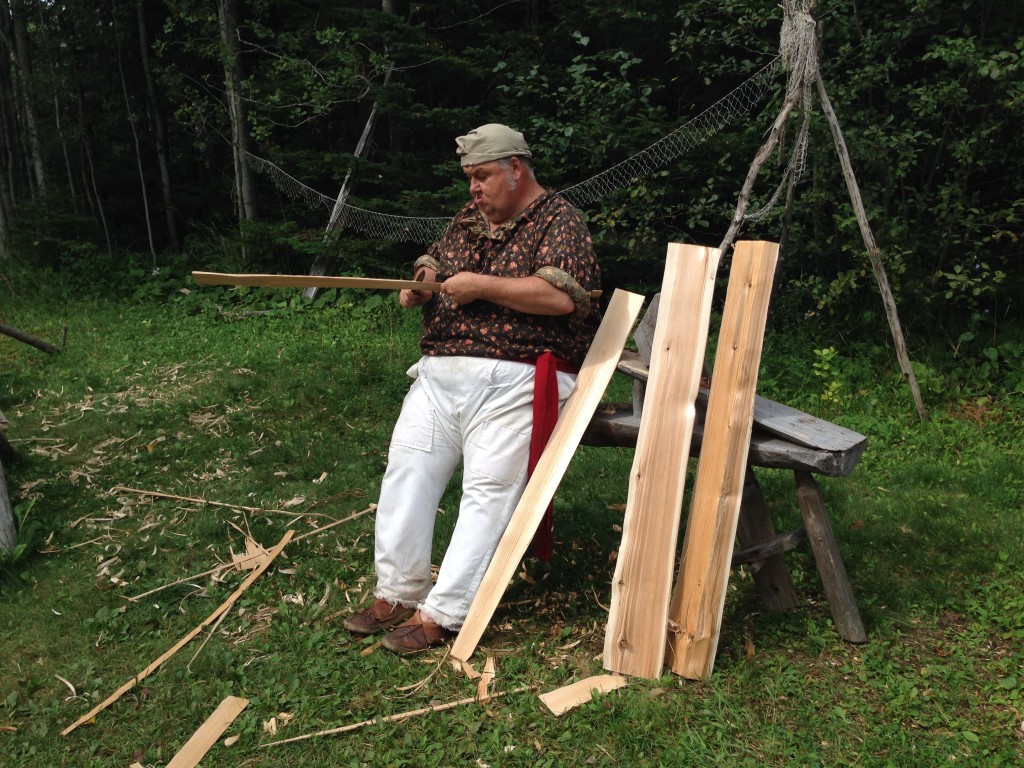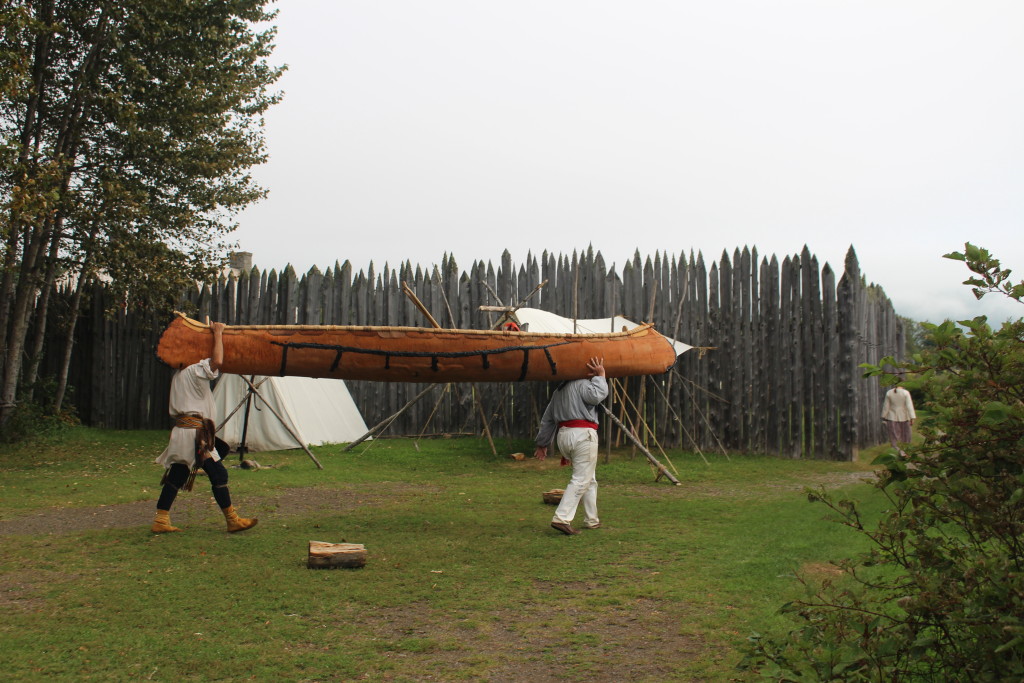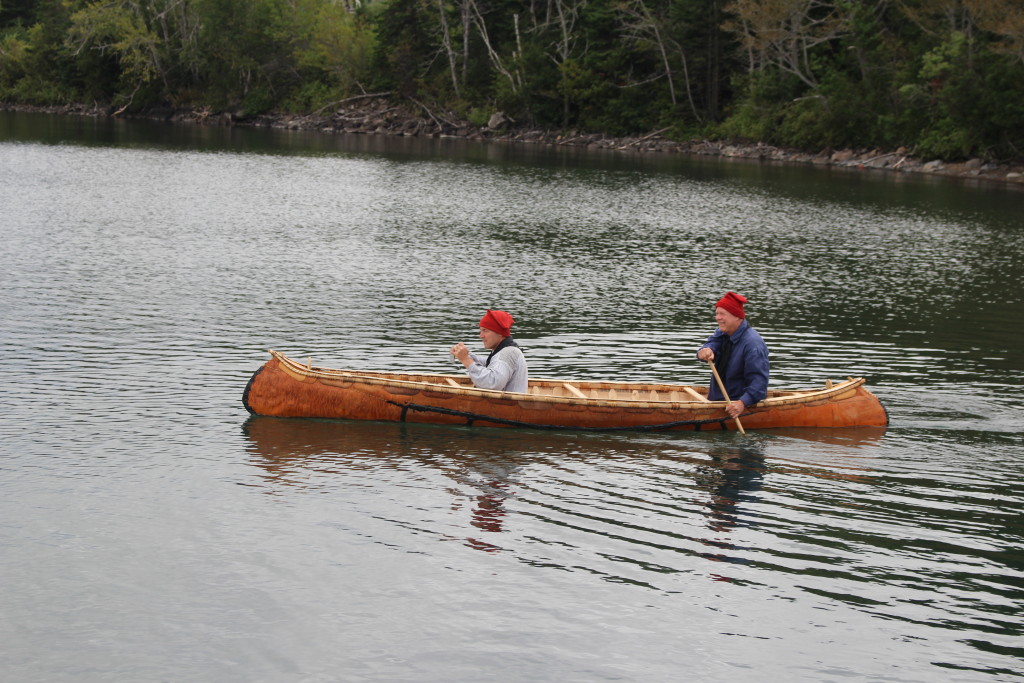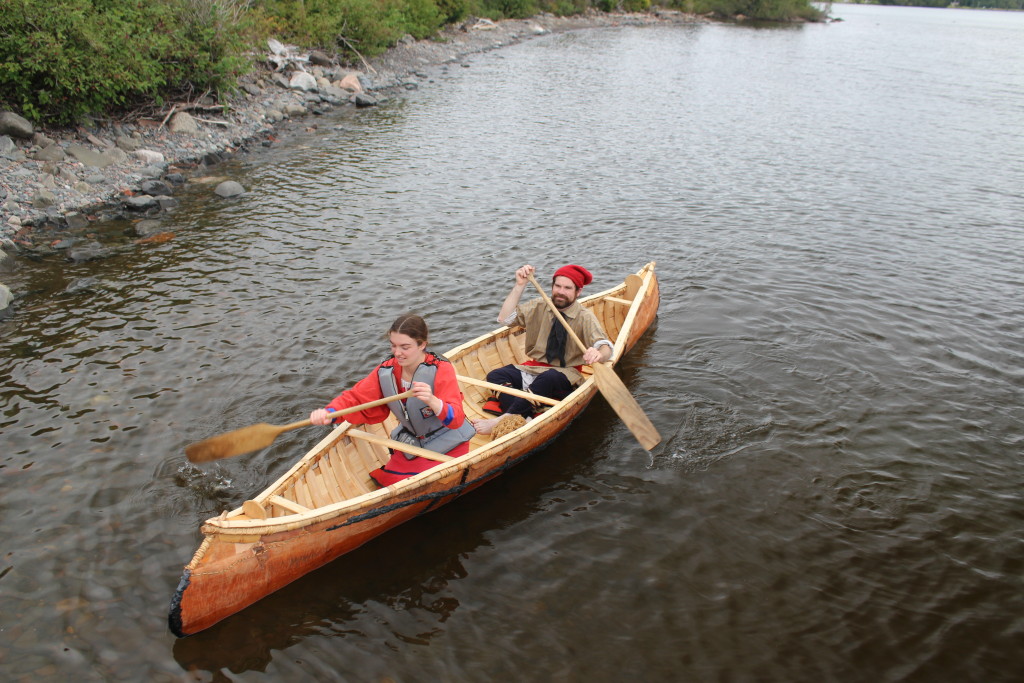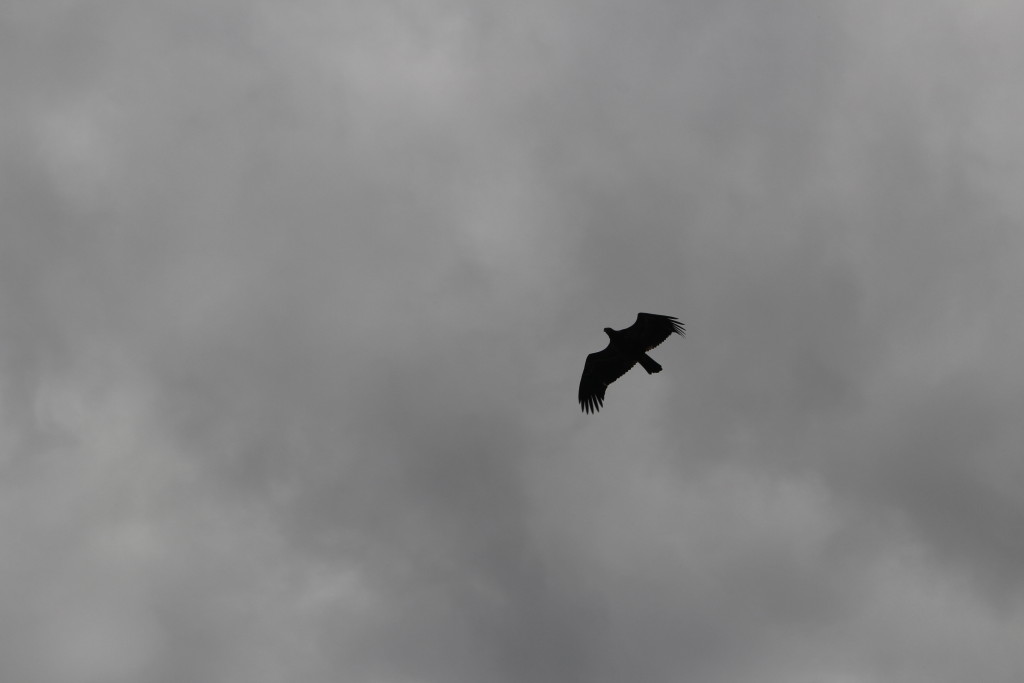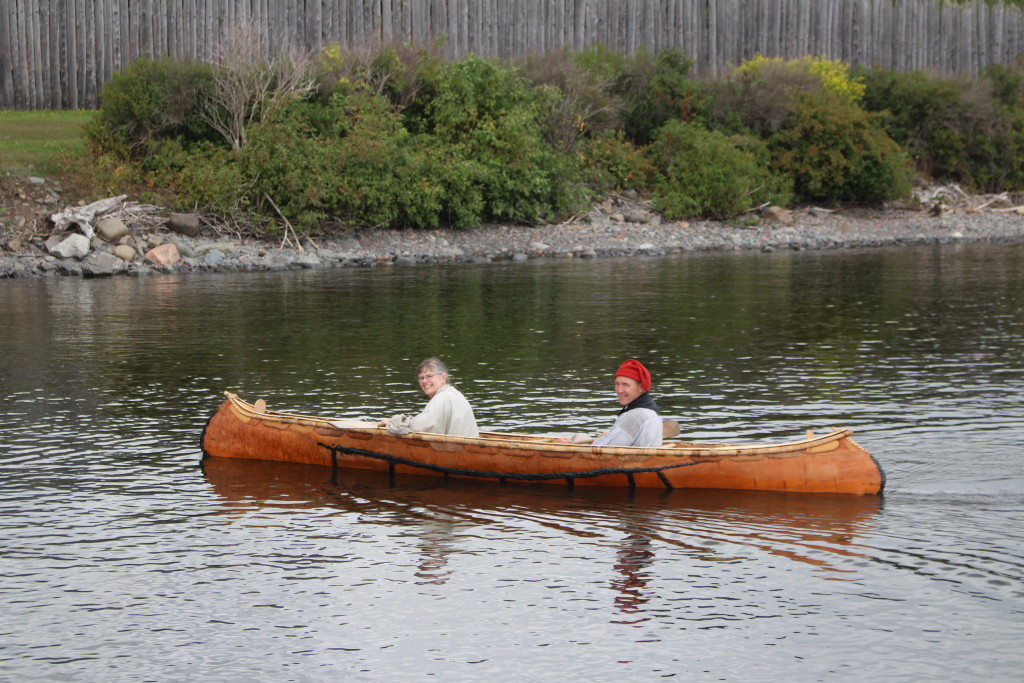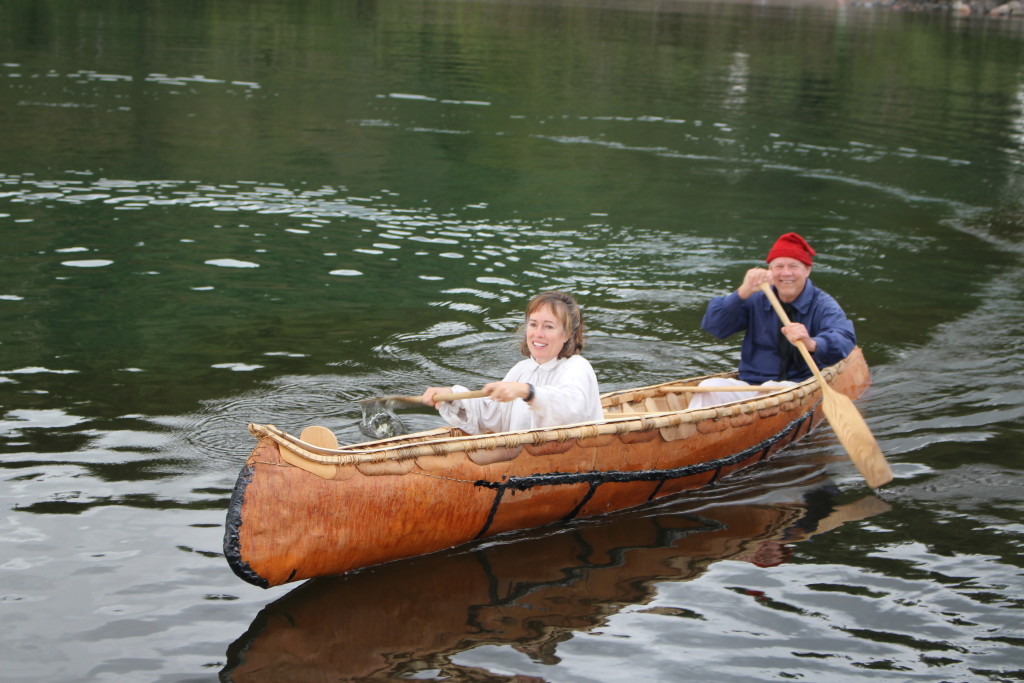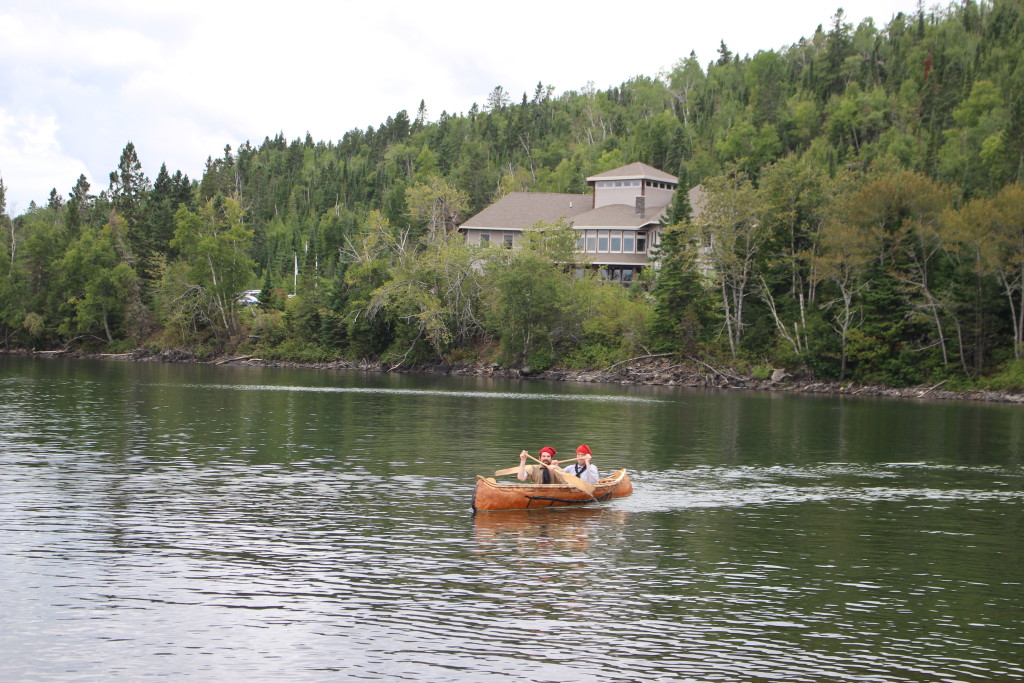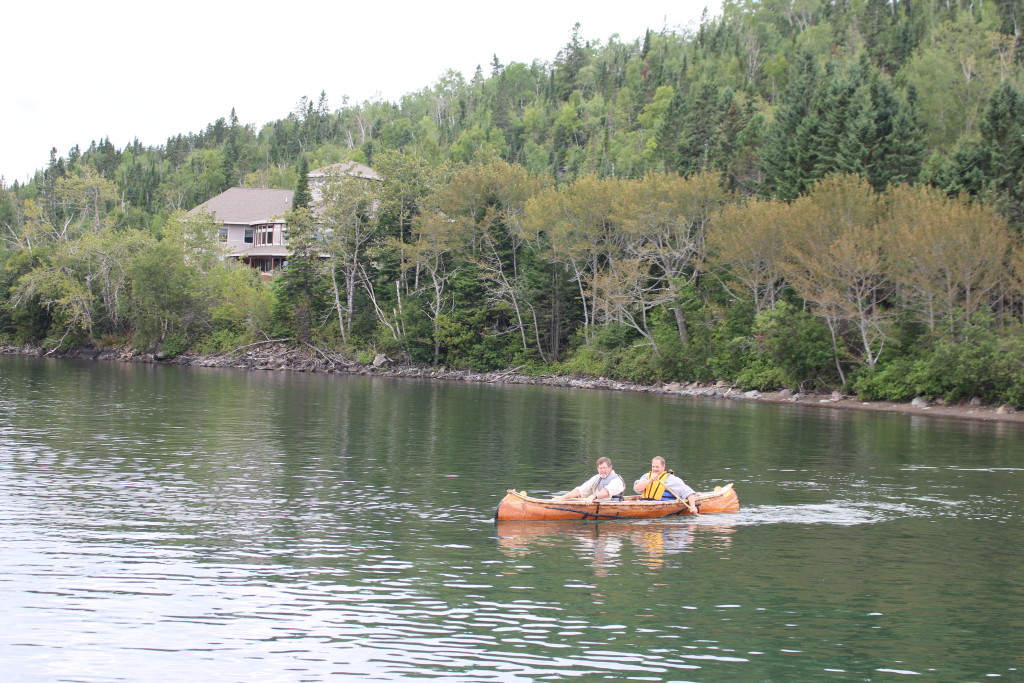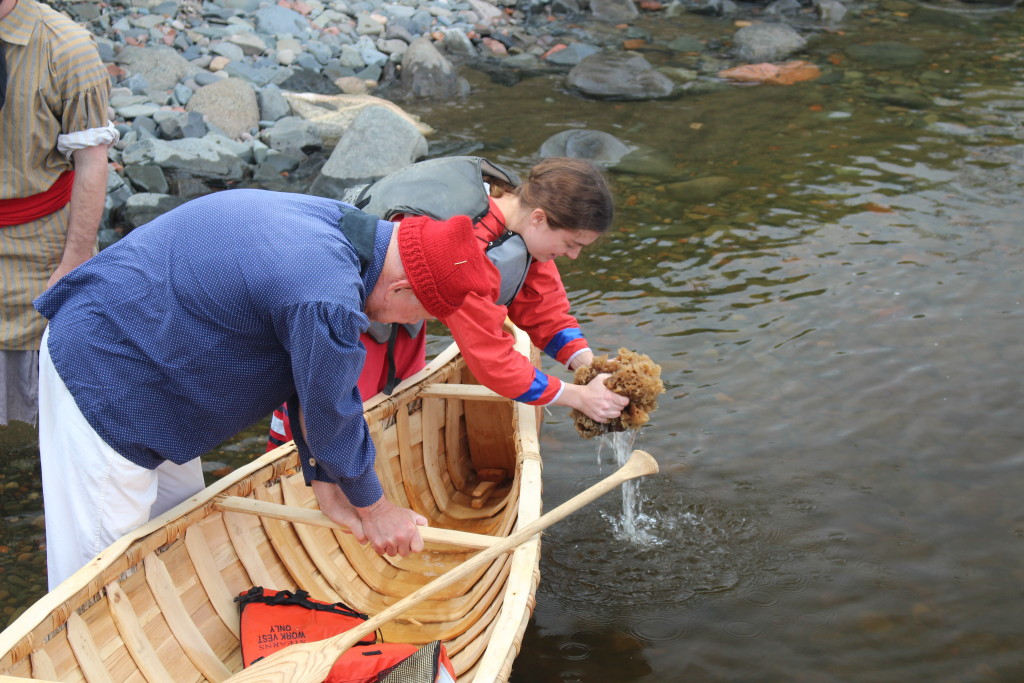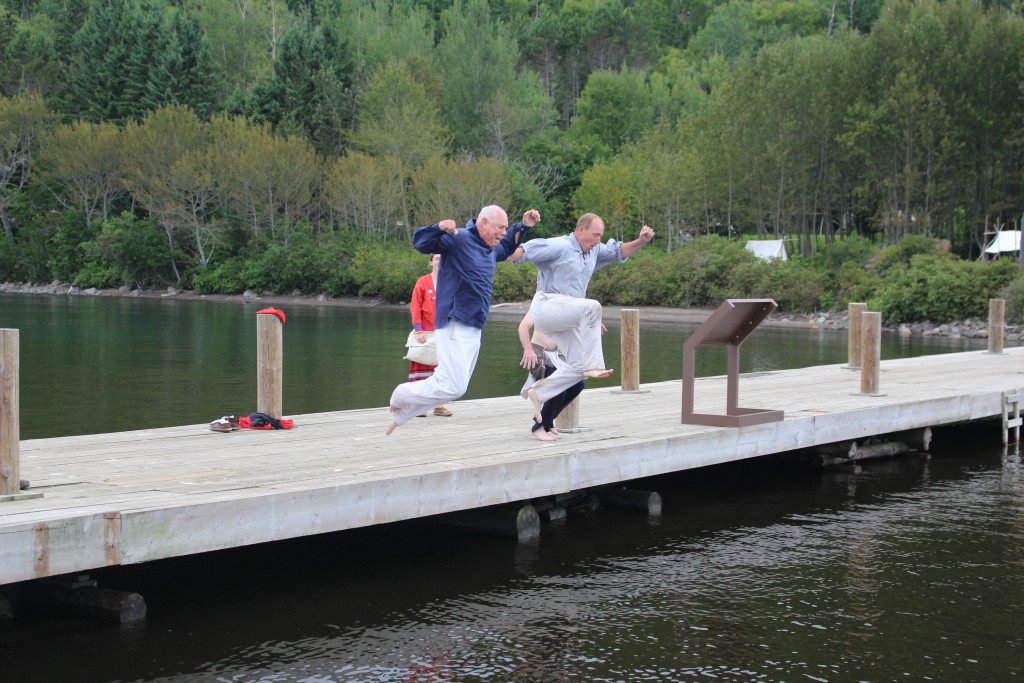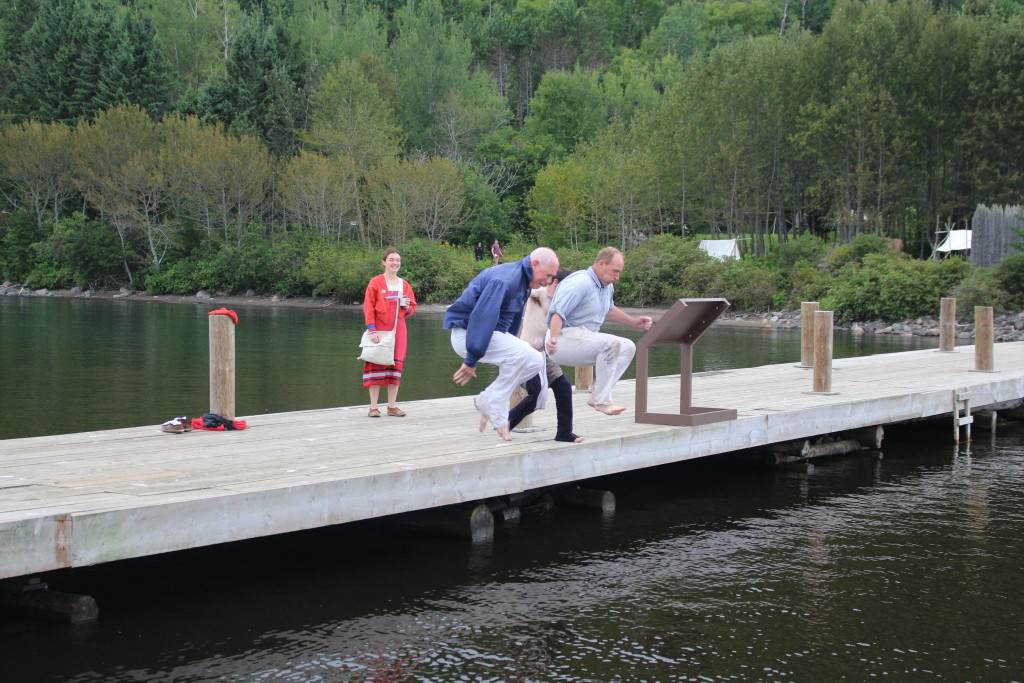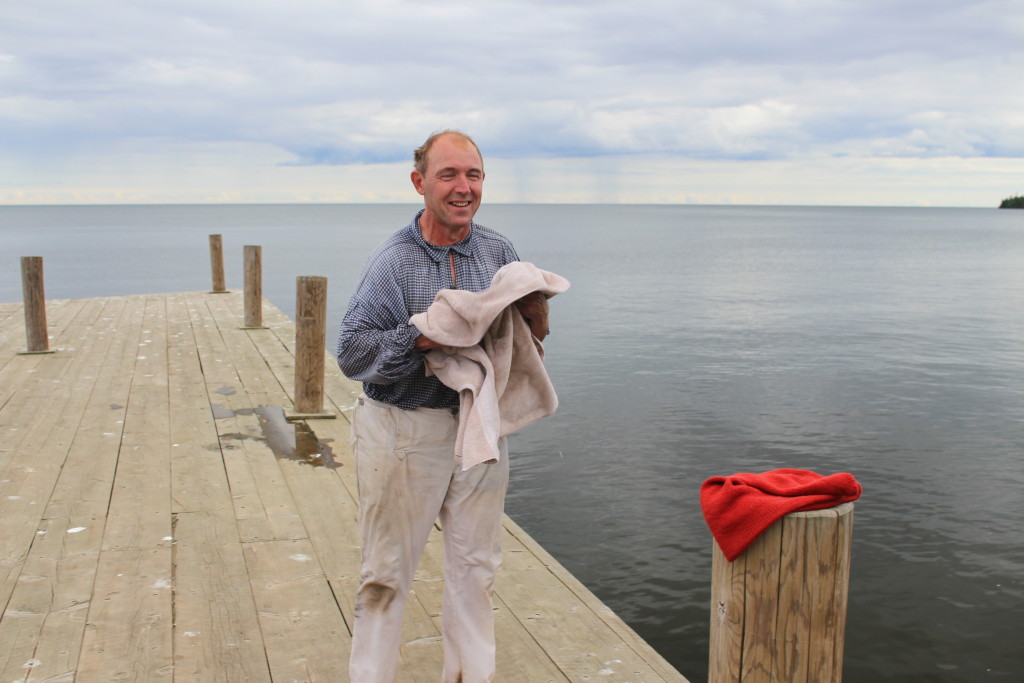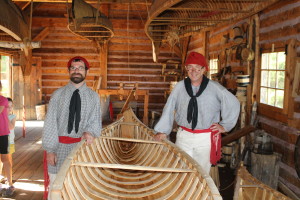
An ongoing project this summer at Grand Portage has been building a birch bark canoe. The staff of the park build one every other summer and we were lucky enough to be here in a year that they were building. All the staff have participated in various ways. Tom and I helped harvest birch bark and spruce root. Tom got very good at splitting cedar. He also shaved some ribs and staves and helped apply the pitch. In addition, Tom did a lot of carrying the canoe from place to place. I helped mainly by working in other places, freeing some of the staff from regular duties so they could work on the canoe.
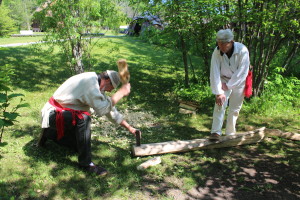
We built the birch bark canoe using traditional Ojibwe materials and tools from the 1790s. We harvested birch bark, we pulled up spruce root (watap), and we cut down a cedar tree. The men split the cedar and shaved down pieces to ribs, sheathing, thwarts, and gunwales.
After harvesting the birch bark, Ranger Karl selected the largest and best pieces of bark. These were laid out on the ground and sewn together with spruce root. We used an awl to make the holes and stick the spruce root through it. The root had to be de-barked, then split so that it was a uniform diameter. We also kept the root wet so that it stayed pliable.
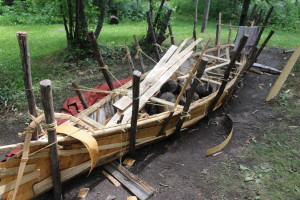
When all the birch bark was sewn together, a pattern frame was placed over it and rocks were placed inside to hold the birch bark around the frame. The birch bark was bent up and held in place by stakes driven into the ground. Inner and outer gunwales were placed and the birch bark was first clamped and then sewn to the gunwales.
The stems were formed by bending pieces of cedar until we had the desired shapes. We had to patiently pour boiling water over them and gradually bend them. Although they were pretty flexible, we broke a couple before we got the shape right.
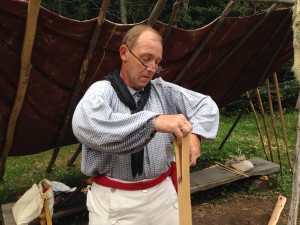
Once the gunwales were in place and the stems were shaped and placed, we took the rocks and the frame out of the bottom. The canoe was very spongy and fragile at this point so it was important to treat it tenderly. The sheathing was placed in the canoe along the bark to reinforce it and give it more strength. Then the ribs were placed to hold the sheathing and give shape to the birch bark. Each rib had to be shaped and bent by hand. It was a delicate, time-consuming process and we were blessed with several woodworking rangers who were very patient.
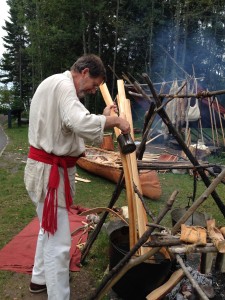
When all the sheathing and ribs were placed, the birch bark canoe was ready for the final step: applying the pitch. Pitch is a mixture of powdered charcoal, spruce sap, and bear grease. The grease made the pitch pliable. The charcoal made it black so we could see where we put it. The spruce sap sealed the holes made by the awl and the seams along the birch bark where it was sewn together. We put buckets of water in the birch bark canoe on land so we could see where it still had holes and needed more pitch.
Finally we were ready to take the birch bark canoe to the water and test it. After carrying it down to the lake, Carrie and Rick held it in the water for a while to make sure it was (mostly) water-tight. Then they climbed in for the maiden voyage. The canoe moved quickly through the water, needing very little power to move it or turn it. There were several places where it leaked and one rib broke, so out it came for repairs before it was lake-worthy again.
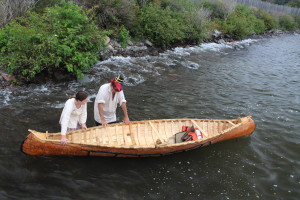
Yesterday (on a day off) we took the canoe down to Lake Superior again. Six of us had the day off and all six of us were there to try it out. Carrie and Jared had put in the most work, spending most of their days off working on the canoe, so they spent the longest time in it. But Johnny, Val, Tom and I all took a turn. After two hours in the water there was only a little leaking and we managed not to break anything.
The canoe is about the size that was used by an Ojibwe family to hunt, fish, and move from place to place. It weighs about 50 pounds – about 10 pounds heavier than if a professional had built it – but we are very proud of our beautiful birch bark canoe. On Monday Jared was stroking it and a visitor asked him if the canoe was special. Jared replied proudly, “That’s my baby!” With so many staff working on the canoe all summer – the baby belongs to all of us.

